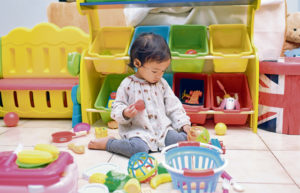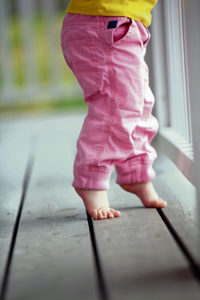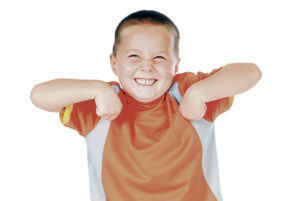 Your cute little bundle of joy is bright eyed and happy, but when she crawls on the carpet she looks like a malfunctioning wind-up toy. Your kindergartener is easy to spot on the playground because he runs like he’s moving through jello. Is it quirky? Is it a family pattern? Is it something to look at more closely?
Your cute little bundle of joy is bright eyed and happy, but when she crawls on the carpet she looks like a malfunctioning wind-up toy. Your kindergartener is easy to spot on the playground because he runs like he’s moving through jello. Is it quirky? Is it a family pattern? Is it something to look at more closely?
1. Wiggle Worm
If your baby seems to favor one side or wiggles and squirms the same way every time, using one side more than the other, this is an indicator of a possible motor problem. Young babies should move in very random patterns and should definitely not yet favor one side of the body.
2. Lopsided Noggin
Your baby tilts his/her head to one side and/or has a flat head. This could be a sign of torticollis — a tight neck muscle — and can restrict your baby’s development. If this is the case and/or if your baby has a flat spot on his head, please bring it to your doctor’s attention immediately.
3. “W-sitting”
Your little one prefers to sit on the floor with her knees pointing in and feet pointing out, creating a “W” position of the legs. If this happens once in a while, it’s probably not a cause for concern.
However, if this is your child’s “go to” position, it may be a sign of a muscular imbalance and can lead to some orthopedic problems in the future.
4. Tippy Toe Tot

Some kids walk on their toes when they are excited or for sensory reasons. Toe walking that comes and goes is likely not a big deal. When toe walking is persistent and your child starts to have restricted movement of the ankles, it is definitely time to get a professional opinion.
5. Wet Noodle or Toy Soldier
If your baby or child seems to have “floppy” or “stiff” muscles and/or seems to tire easily, it could be a sign of some differences in muscle tone or neurological development. Your child’s pediatrician or a therapist can help shed some light on muscle tone.
6. Funky Chicken
Does your child move through space in an unusual or unexpected way? A baby scooting on her bottom or doing a bunny hop move instead of crawling is an example of such a funky pattern. An older child who runs with his arms held up high, instead of swinging them is another example.
7. Rag Doll
Does your kiddo seem to crash and fall frequently, often “on purpose”? Is he covered in bruises from frequently “biffing” it? Is he over the top with how he uses his muscles and seems to take everything too far? Reduced awareness of body position in space and a high pain threshold can can result in an accident prone kiddo.
8. Pigeon-toe or Cowboy
If your child walks or stands with a noticeable in-toe or out-toe pattern and/or seems to sink in or out with his feet, you may want to ask a doctor or a physical therapist if this needs to be addressed. Kids should walk with mostly aligned ankles, feet, knees and hips knees after about age three.
9. Weeble Wobble
Your child falls over with an unexpected loss of balance. He seems generally unstable and may even have a fear of falling. Does he avoid physical games and struggle to navigate around obstacles? This may be an indication of a weak core and/or poorly developed postural and balance responses.
10.Milkshake
If your child seems to tremble when walking or always shakes and overshoots when reaching for an object, this may be a sign of an underlying neurological impairment and you should point it out to your pediatrician.
These are just some general gross motor “red flags.” If you have concerns about your child’s gross motor development, please ask your pediatrician.
Author’s profile: Lisa Helenius is a practicing occupational therapist with 25 years of pediatric experience. She currently is a partner at Growing Up Therapy. See https://growinguptherapy.com for more information.


